The AP English Literature and Composition Cheat Sheet for 2024 offers a streamlined guide to essential literary concepts and key terms crucial for excelling in the AP exam. This cheat sheet covers eight core areas: Literary Terms, Poetry, Prose Fiction, Drama, Literary Movements, Authorial Intent, Literary Analysis, and Essay Writing. Each section outlines fundamental concepts such as figurative language, poetic forms, narrative techniques, dramatic structures, historical and cultural contexts, and analytical methods. Use this cheat sheet as a quick reference to solidify your understanding of literary elements, enhance your analytical skills, and ensure you’re thoroughly prepared for the exam.
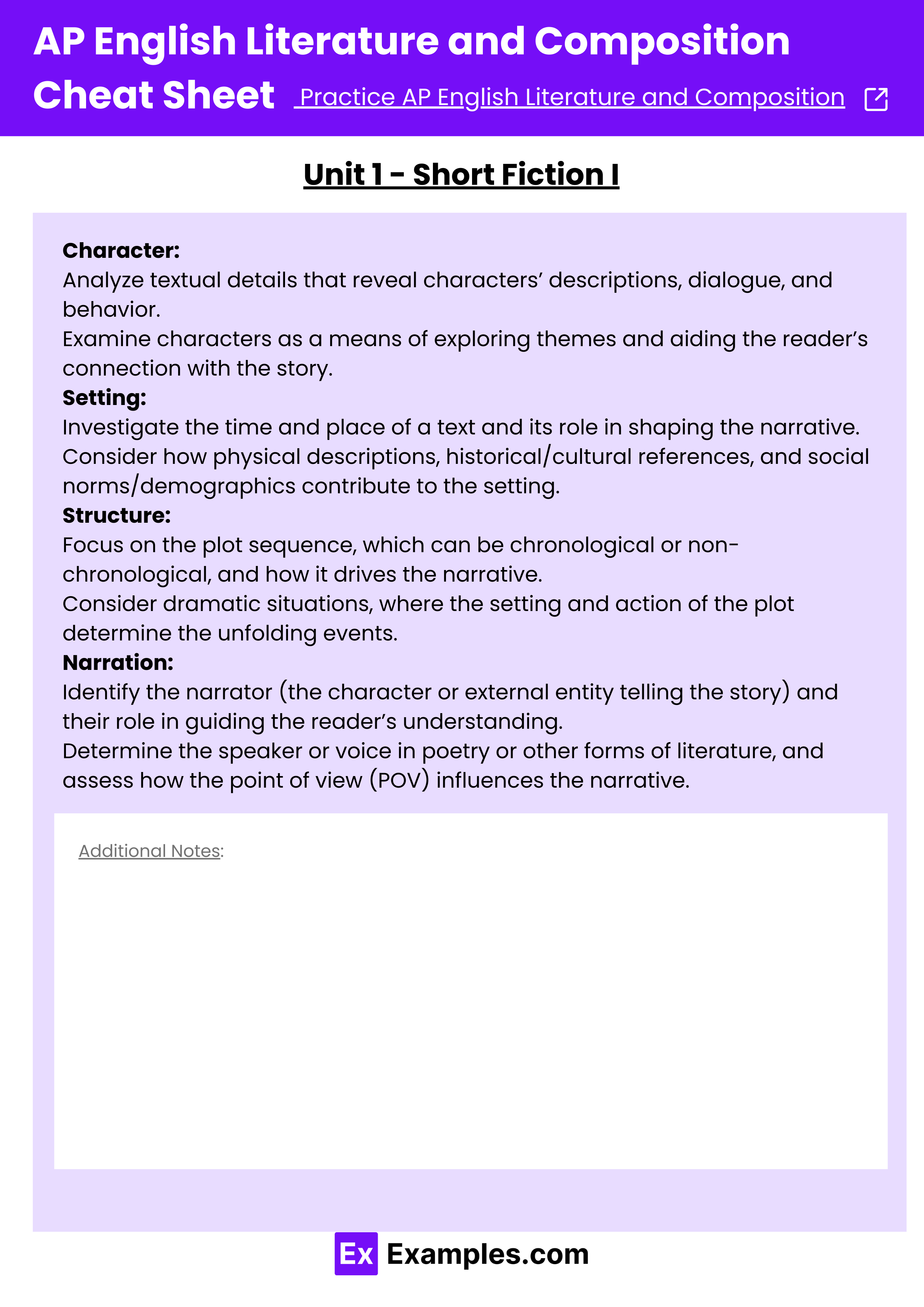
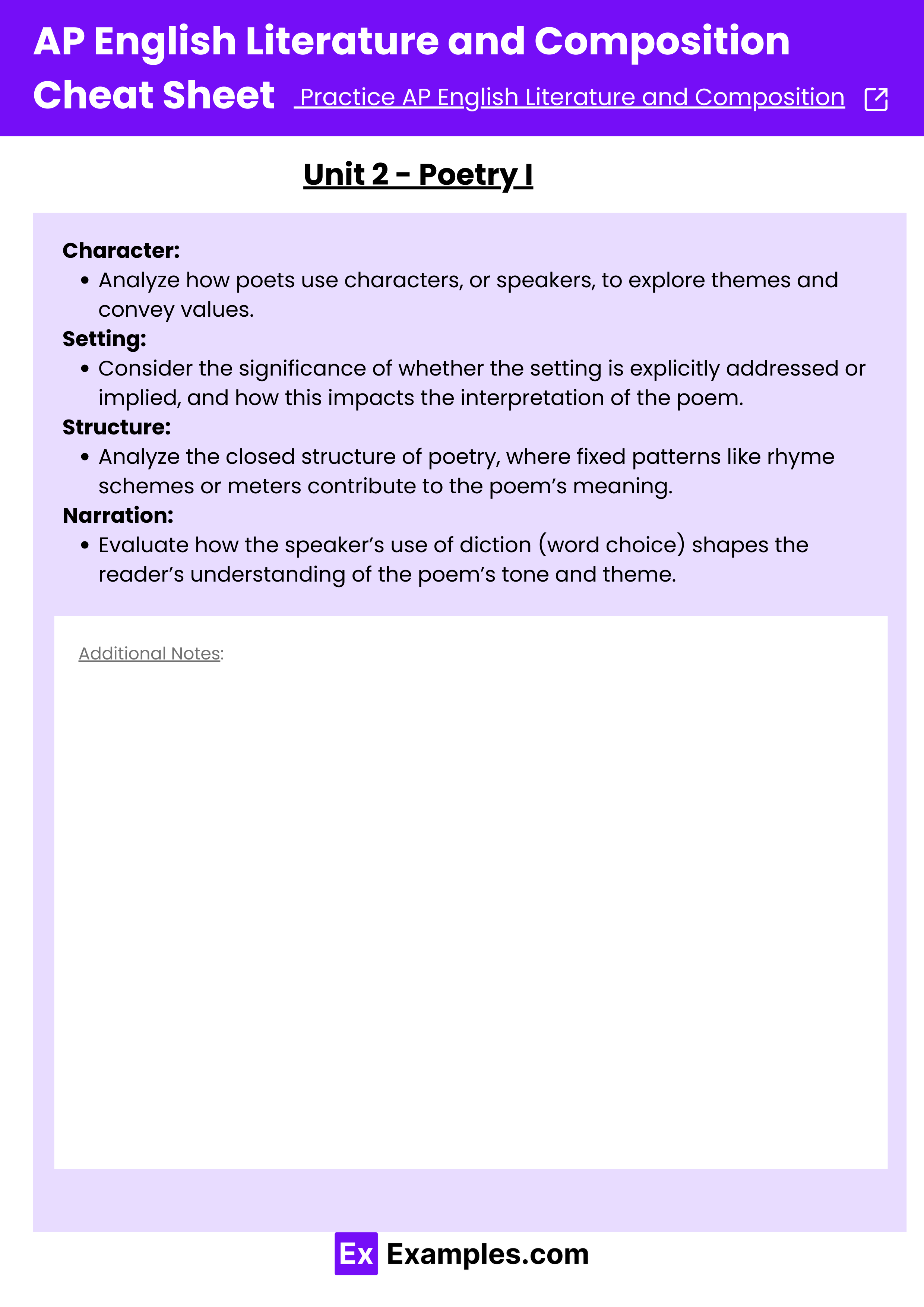
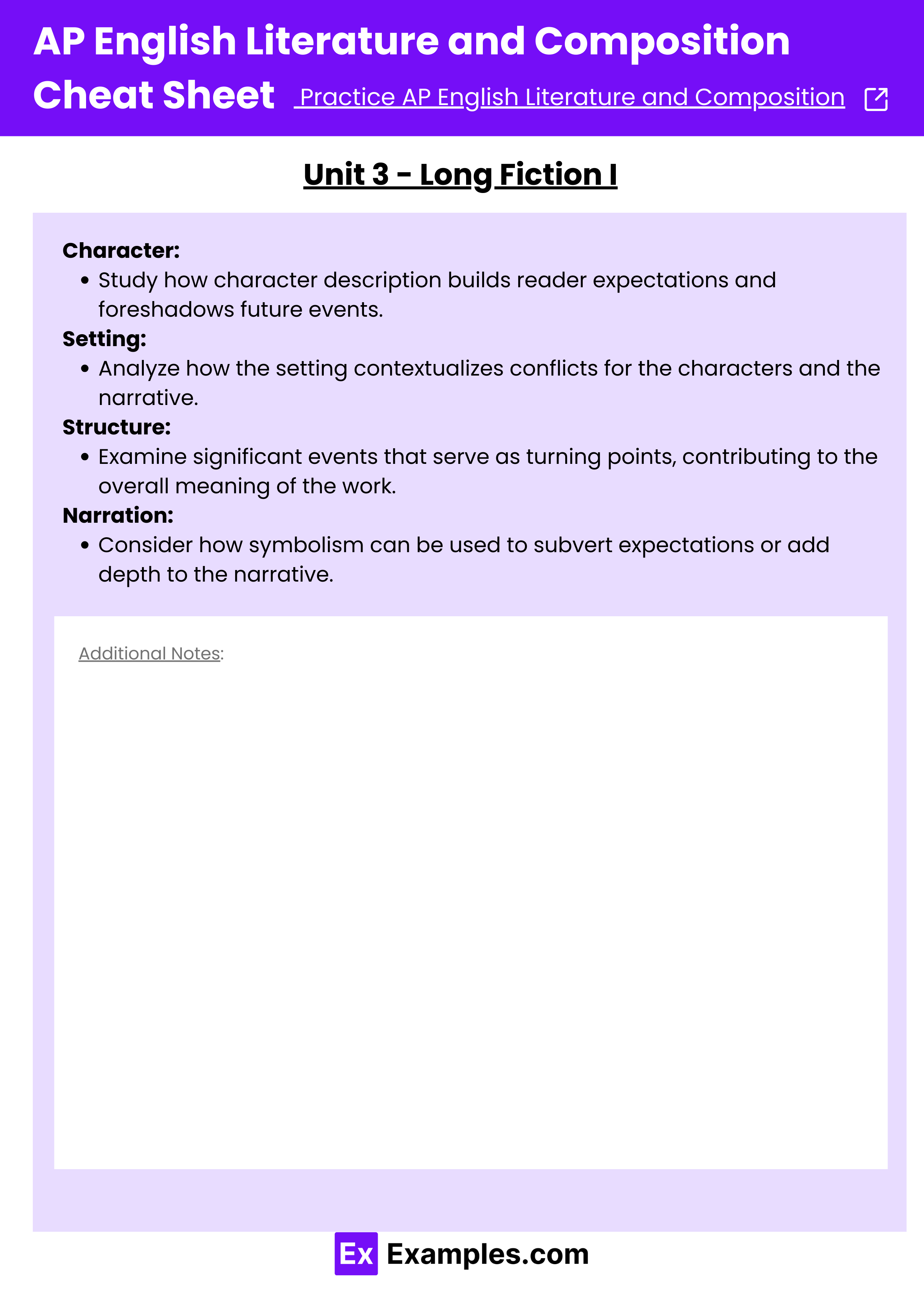

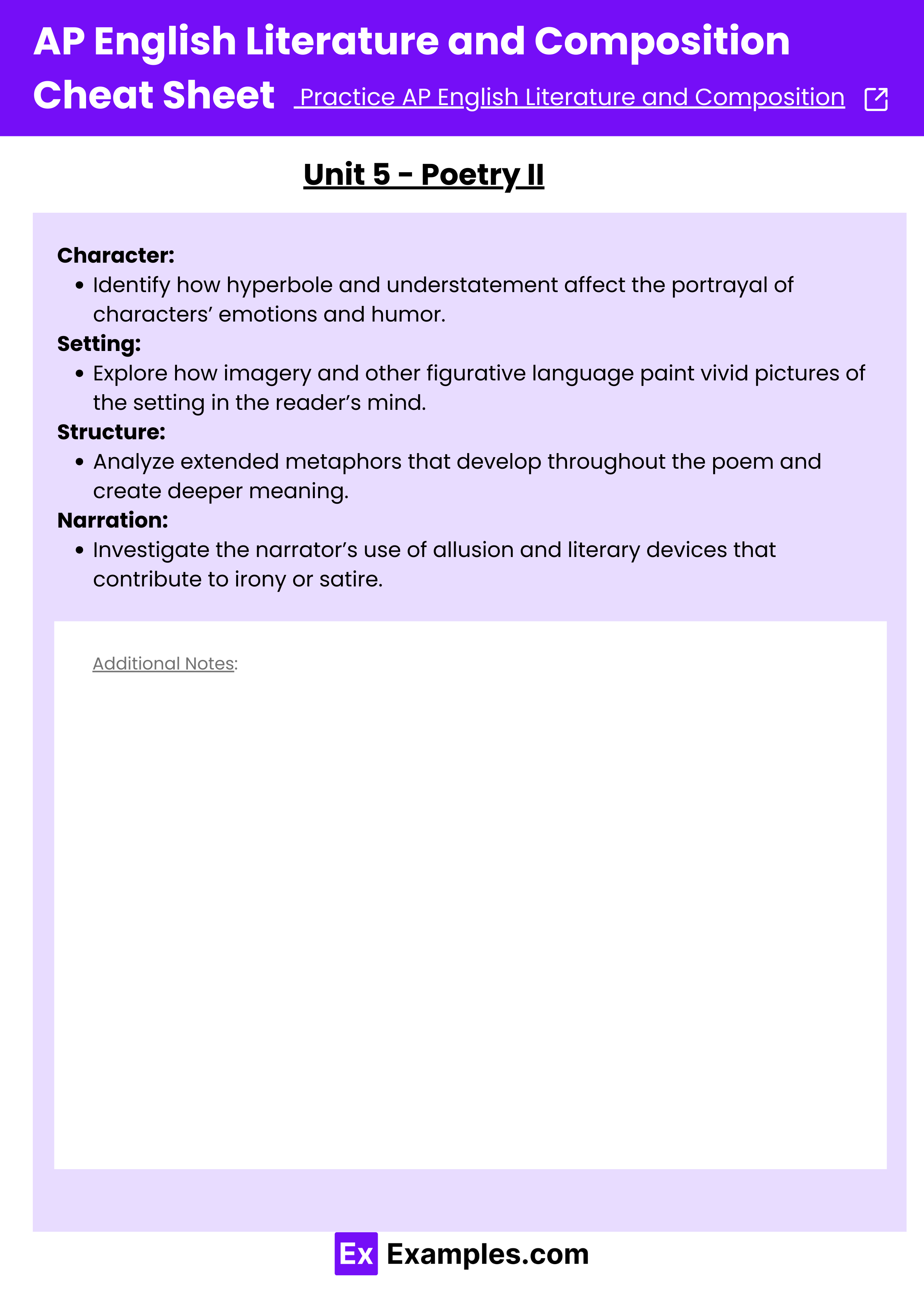
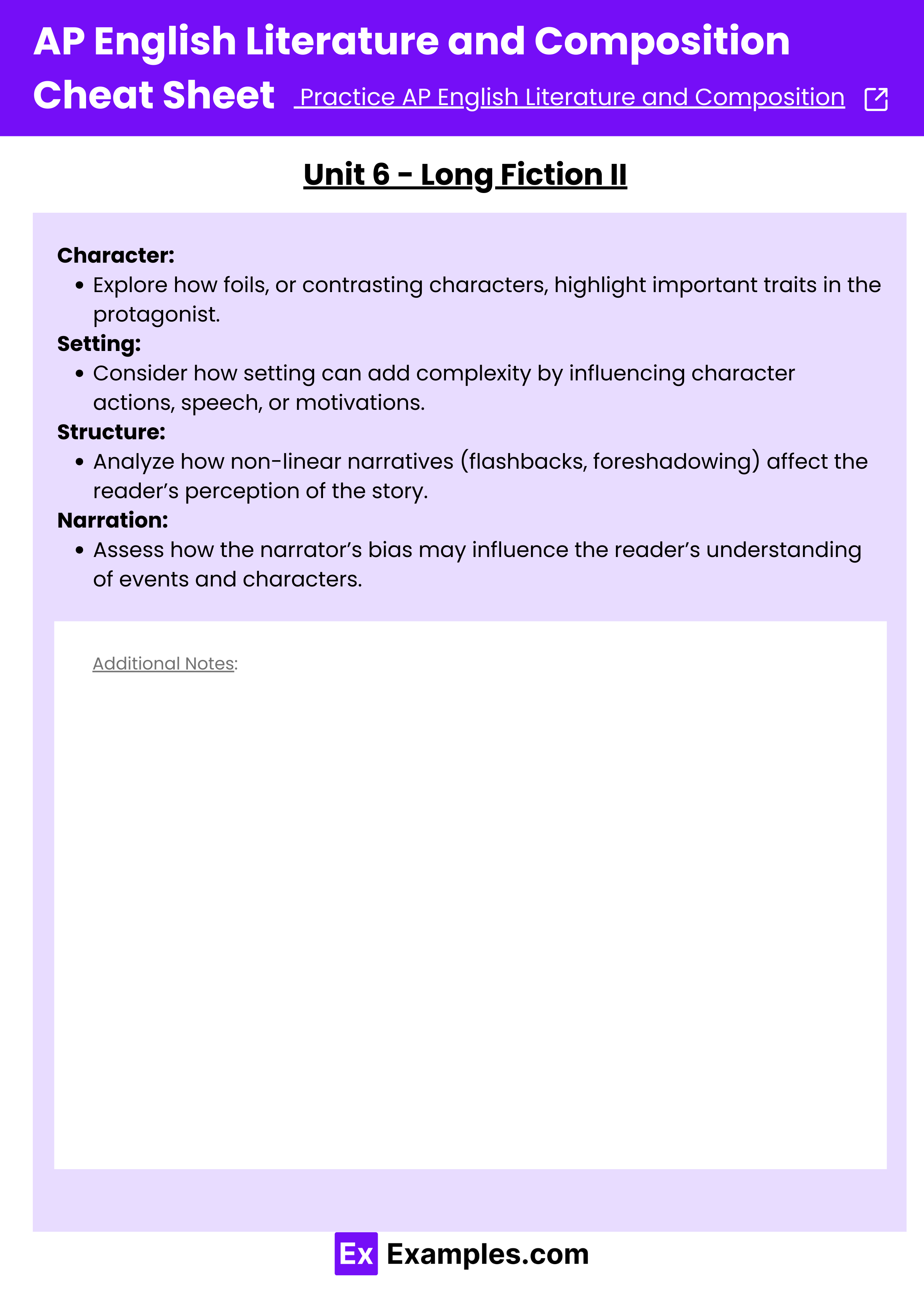
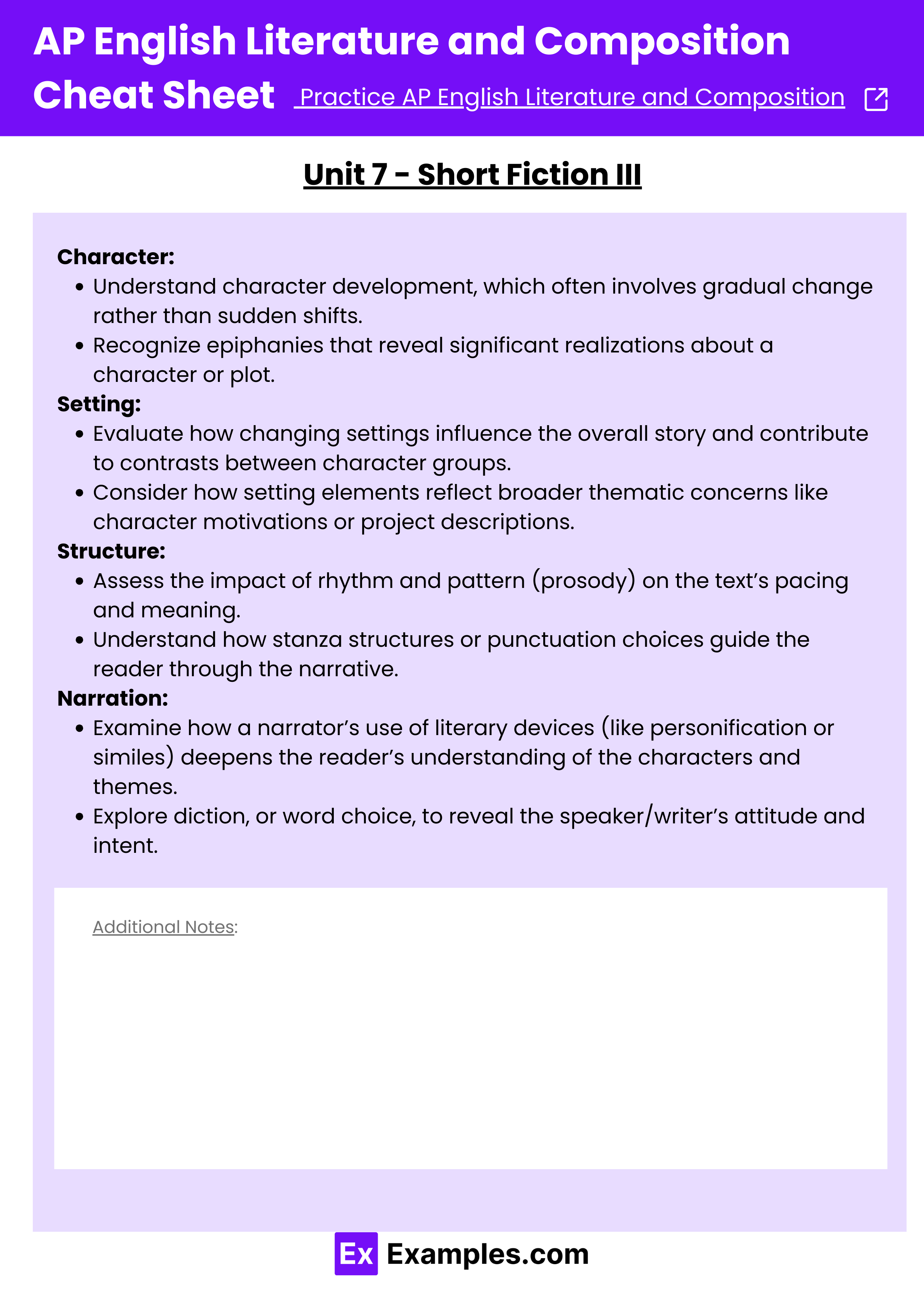
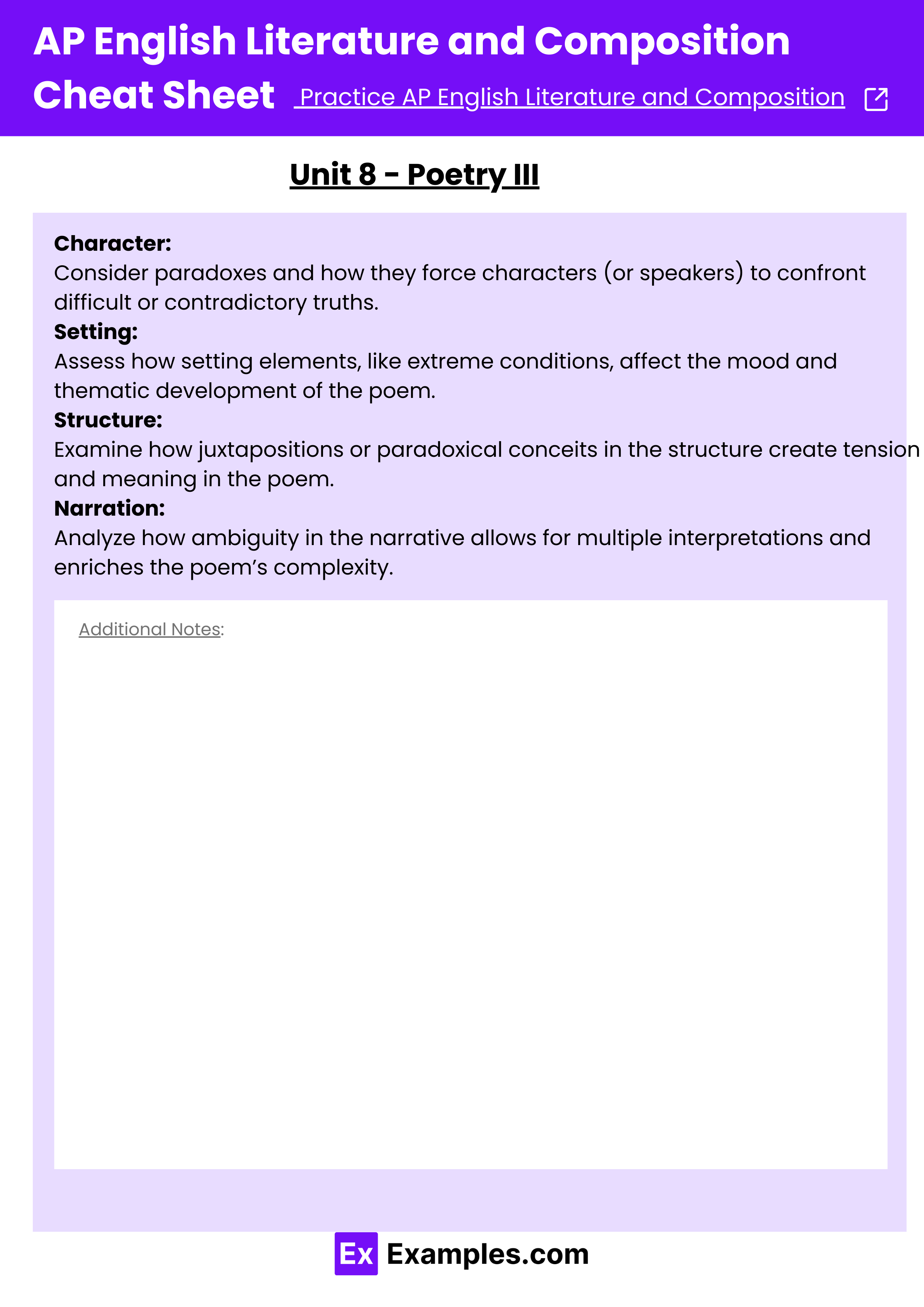
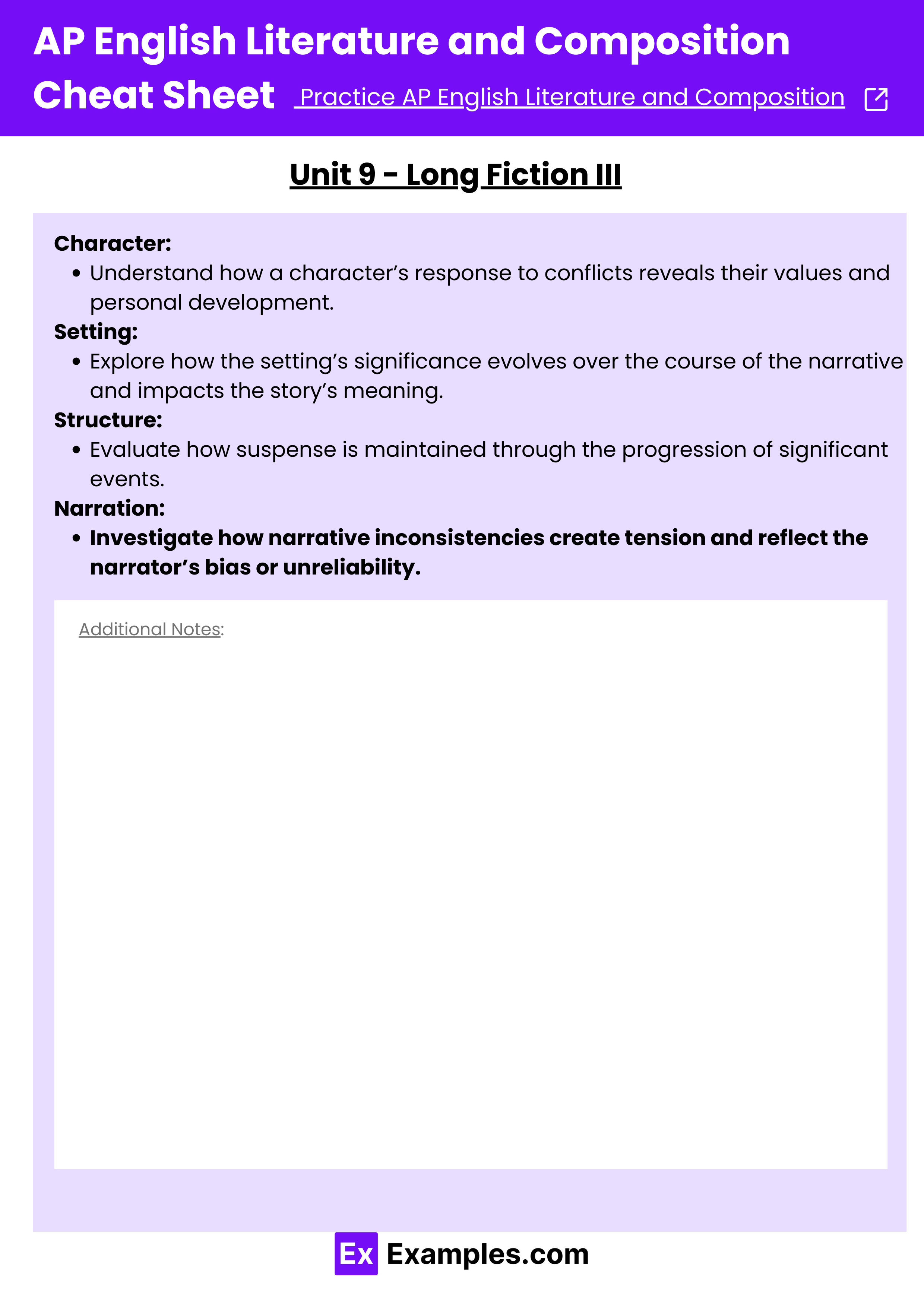
Download AP English Literature and Composition Cheat Sheet – Pdf
Unit 1 – Short Fiction I
Character:
- Analyze textual details that reveal characters’ descriptions, dialogue, and behavior.
- Examine characters as a means of exploring themes and aiding the reader’s connection with the story.
Setting:
- Investigate the time and place of a text and its role in shaping the narrative.
- Consider how physical descriptions, historical/cultural references, and social norms/demographics contribute to the setting.
Structure:
- Focus on the plot sequence, which can be chronological or non-chronological, and how it drives the narrative.
- Consider dramatic situations, where the setting and action of the plot determine the unfolding events.
Narration:
- Identify the narrator (the character or external entity telling the story) and their role in guiding the reader’s understanding.
- Determine the speaker or voice in poetry or other forms of literature, and assess how the point of view (POV) influences the narrative.
Unit 2 – Poetry I
Character:
- Analyze how poets use characters, or speakers, to explore themes and convey values.
Setting:
- Consider the significance of whether the setting is explicitly addressed or implied, and how this impacts the interpretation of the poem.
Structure:
- Analyze the closed structure of poetry, where fixed patterns like rhyme schemes or meters contribute to the poem’s meaning.
Narration:
- Evaluate how the speaker’s use of diction (word choice) shapes the reader’s understanding of the poem’s tone and theme.
Unit 3 – Long Fiction I
Character:
- Study how character description builds reader expectations and foreshadows future events.
Setting:
- Analyze how the setting contextualizes conflicts for the characters and the narrative.
Structure:
- Examine significant events that serve as turning points, contributing to the overall meaning of the work.
Narration:
- Consider how symbolism can be used to subvert expectations or add depth to the narrative.
Unit 4 – Short Fiction II
Character:
- Analyze characters’ actions and speech to reveal their values, goals, and relationships.
- Differentiate between protagonists, antagonists, and other character types (e.g., archetypes like hero or villain).
Setting:
- Assess the atmosphere created by the setting and plot events and how it affects the reader’s emotions.
- Evaluate the tone of the text, which can evoke various emotional responses like tension, romance, or fear.
Structure:
- Examine how the narrator’s perspective (who tells the story) influences the reader’s perception of events.
- Analyze pacing, focusing on how the manipulation of time (emphasis on individual events) shapes the narrative.
Narration:
- Consider how the characters’ descriptions of their setting affect their attitudes and motivations.
- Pay attention to how the narrator’s language and tone can signal changes in the narrative, such as epiphanies.
Unit 5 – Poetry II
Character:
- Identify how hyperbole and understatement affect the portrayal of characters’ emotions and humor.
Setting:
- Explore how imagery and other figurative language paint vivid pictures of the setting in the reader’s mind.
Structure:
- Analyze extended metaphors that develop throughout the poem and create deeper meaning.
Narration:
- Investigate the narrator’s use of allusion and literary devices that contribute to irony or satire.
Unit 6 – Long Fiction II
Character:
- Explore how foils, or contrasting characters, highlight important traits in the protagonist.
Setting:
- Consider how setting can add complexity by influencing character actions, speech, or motivations.
Structure:
- Analyze how non-linear narratives (flashbacks, foreshadowing) affect the reader’s perception of the story.
Narration:
- Assess how the narrator’s bias may influence the reader’s understanding of events and characters.
Unit 7 – Short Fiction III
Character:
- Understand character development, which often involves gradual change rather than sudden shifts.
- Recognize epiphanies that reveal significant realizations about a character or plot.
Setting:
- Evaluate how changing settings influence the overall story and contribute to contrasts between character groups.
- Consider how setting elements reflect broader thematic concerns like character motivations or project descriptions.
Structure:
- Assess the impact of rhythm and pattern (prosody) on the text’s pacing and meaning.
- Understand how stanza structures or punctuation choices guide the reader through the narrative.
Narration:
- Examine how a narrator’s use of literary devices (like personification or similes) deepens the reader’s understanding of the characters and themes.
- Explore diction, or word choice, to reveal the speaker/writer’s attitude and intent.
Unit 8 – Poetry III
Character:
- Consider paradoxes and how they force characters (or speakers) to confront difficult or contradictory truths.
Setting:
- Assess how setting elements, like extreme conditions, affect the mood and thematic development of the poem.
Structure:
- Examine how juxtapositions or paradoxical conceits in the structure create tension and meaning in the poem.
Narration:
- Analyze how ambiguity in the narrative allows for multiple interpretations and enriches the poem’s complexity.
Unit 9 – Long Fiction III
Character:
- Understand how a character’s response to conflicts reveals their values and personal development.
Setting:
- Explore how the setting’s significance evolves over the course of the narrative and impacts the story’s meaning.
Structure:
- Evaluate how suspense is maintained through the progression of significant events.
Narration:
- Investigate how narrative inconsistencies create tension and reflect the narrator’s bias or unreliability.
FRQ Tips:
- Literary Elements: Memorize key literary terms like tone, style, imagery, figurative language, and characterization.
- Engaging Reader: Use a grabber (2-3 sentences) to engage the reader.
- Thesis Template: Craft a clear thesis using a template such as: “In this excerpt from (novel), (author’s) (adjective + device) and (adjective + device) portray/create the complex (prompt element) as (analysis adjective) and yet (analysis adjective).”

